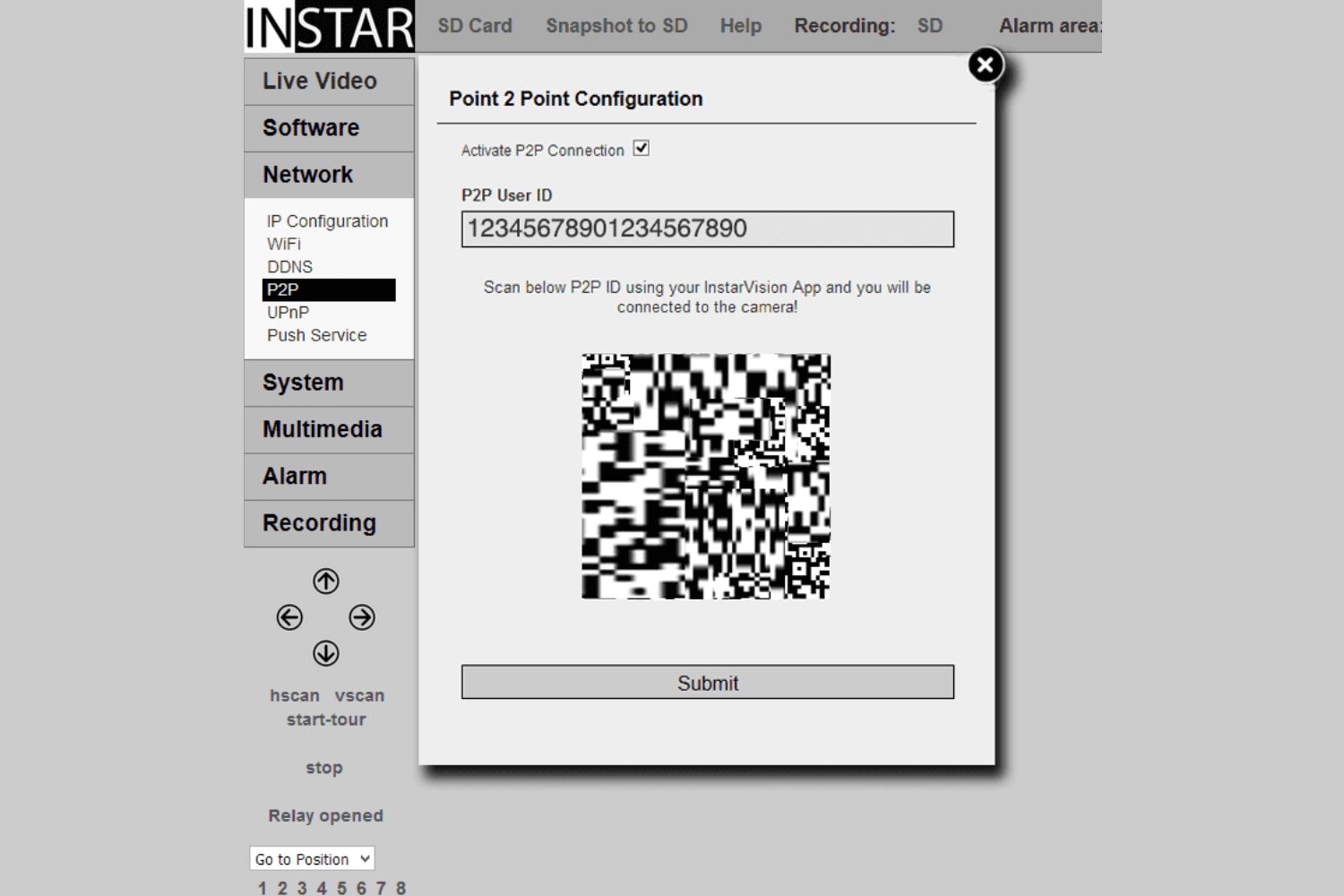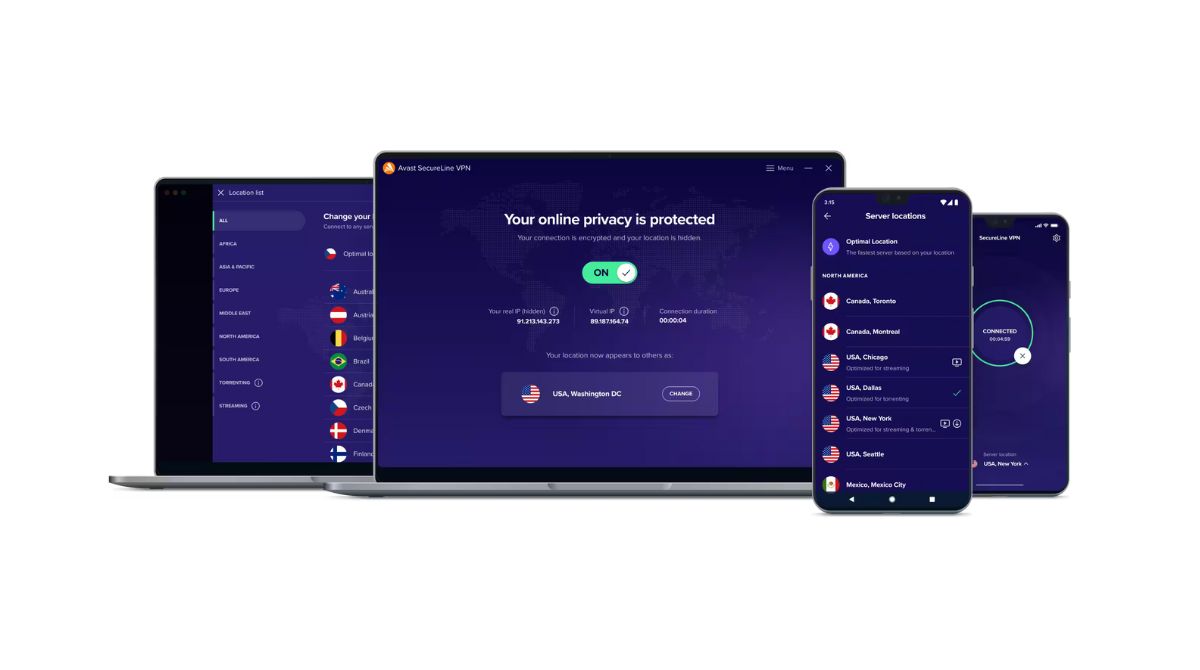Introduction
The world of cybercrime is constantly evolving, and one of the emerging threats is Peer-to-Peer (P2P) botnets. These sophisticated networks of compromised computers have the potential to cause significant damage to individuals, businesses, and even entire countries. P2P botnets leverage the power of distributed computing to carry out malicious activities while evading detection. Understanding how these botnets work is essential for defenders in the ongoing battle against cybercriminals.
In this article, we will explore the intricacies of P2P botnets, including their formation, communication protocols, infection techniques, command and control mechanisms, advantages, disadvantages, and real-world examples. By gaining an understanding of the inner workings of P2P botnets, individuals and organizations can better equip themselves to detect, mitigate, and prevent these malicious threats.
P2P botnets operate differently from traditional central server-based botnets. In a typical botnet, compromised computers connect to a central command and control (C&C) server to receive instructions. However, in a P2P botnet, the infected computers communicate directly with each other, forming a decentralized network without a single point of failure.
The distributed nature of P2P botnets poses numerous challenges to cybersecurity professionals. Traditional methods of detection and mitigation used for centralized botnets may be ineffective against the stealthy and adaptive nature of P2P networks. As a result, it is crucial to understand the underlying principles and mechanisms of P2P botnets, as well as the strategies used to combat them.
To comprehend the complexities of P2P botnets, it is essential to have a basic understanding of peer-to-peer networks. P2P networks are decentralized systems where each participant, or peer, has the ability to act as both a client and a server. This enables efficient sharing and distribution of resources, such as files, without the need for a central authority.
In the following sections, we will delve deeper into the formation and communication methods of P2P botnets, the initial infection and exploitation techniques employed by cybercriminals, the command and control mechanisms, as well as the pros and cons of using P2P botnets for malicious purposes. Additionally, we will discuss strategies for detecting and mitigating P2P botnets and examine real-world examples to illustrate the severity of this growing threat.
What is a P2P Botnet?
A peer-to-peer (P2P) botnet is a network of computers compromised by malware and controlled by cybercriminals to carry out malicious activities. Unlike traditional botnets, which rely on a centralized command and control (C&C) infrastructure, P2P botnets utilize a decentralized architecture where infected computers communicate directly with each other. This decentralized structure makes it difficult to detect and take down the botnet, as there is no single point of failure.
P2P botnets are typically formed by infecting a large number of computers with malware, known as bots or zombies. These bots establish connections with other infected machines, creating a virtual network of compromised devices. The infected machines can then be used to carry out various malicious activities, such as distributed denial-of-service (DDoS) attacks, spam distribution, data theft, and spreading of additional malware.
The communication within a P2P botnet is achieved through protocols that facilitate the exchange of commands, data, and updates between the bots. These protocols allow the botmaster (the individual or group controlling the botnet) to issue instructions to the infected machines and receive information about their status and activities. The decentralized nature of P2P botnets enables them to adapt and reorganize in real-time, making it challenging for authorities to disrupt their operations.
One of the key advantages of P2P botnets for cybercriminals is their resilience to takedowns. Unlike centralized botnets that can be neutralized by shutting down the C&C server, P2P botnets continue to function even if some nodes are taken offline. Infected machines can autonomously discover and connect with other bots, ensuring the botnet’s survival and longevity.
The use of P2P botnets poses significant threats to individuals, organizations, and critical infrastructure. These botnets can launch large-scale DDoS attacks, overwhelming websites and online services, disrupting normal operations, and causing financial losses. P2P botnets can also be utilized for spreading malware, creating botnets-for-hire, and carrying out targeted attacks, including espionage and data exfiltration.
Detecting and mitigating P2P botnets present significant challenges due to their decentralized structure and constantly evolving tactics. Cybersecurity professionals employ a variety of techniques, including network traffic analysis, behavior-based detection, and honeypots, to identify and disrupt these malicious networks. Collaboration between law enforcement agencies, security researchers, and internet service providers is crucial in dismantling P2P botnets and bringing the perpetrators to justice.
In the next sections, we will explore in detail the formation and communication methods of P2P botnets, the techniques used to infect and exploit machines, the command and control mechanisms employed by cybercriminals, as well as the advantages, disadvantages, and real-world examples of P2P botnets. Understanding these aspects will enable us to develop effective countermeasures against these sophisticated threats.
The Basics of Peer-to-Peer (P2P) Networks
To understand the inner workings of peer-to-peer (P2P) botnets, it is important to have a basic understanding of P2P networks themselves. In a P2P network, all participating computers, known as peers, have equal capabilities and can act as both clients and servers. This decentralized architecture enables efficient sharing and distribution of resources, such as files, without the need for a central authority or server.
In a P2P network, each peer has the ability to discover and connect with other peers directly. This eliminates the need for intermediary servers, allowing for faster and more direct communication. Peers can join or leave the network dynamically, without disrupting the overall functionality of the network.
P2P networks are typically categorized into two types: pure P2P networks and hybrid P2P networks. In a pure P2P network, all peers perform both client and server functions. Any peer can request and provide resources to other peers in the network. Examples of pure P2P networks include file-sharing platforms like BitTorrent and eDonkey.
On the other hand, hybrid P2P networks, also known as structured P2P networks, have a combination of peers that act as both clients and servers and peers that act solely as servers. These dedicated server peers, also called super-peers or indexing servers, keep track of the resources available in the network and help facilitate the discovery and connection between other peers. Hybrid P2P networks provide more efficient resource discovery and improved scalability compared to pure P2P networks.
In a P2P botnet, the infected computers form a P2P network where each compromised machine acts as a peer. These infected peers are controlled by the botmaster through command and control methods specifically designed for P2P networks. The botmaster can issue commands to the infected machines, receive updates on their status, and conduct coordinated attacks using the collective power of the botnet.
The decentralized nature of P2P botnets poses significant challenges for detecting and mitigating these threats. Traditional methods used to dismantle centralized botnets – such as sinkholing the C&C server or blocking specific IP addresses – are ineffective against P2P botnets. Since the communication in P2P botnets occurs directly between the infected machines, disrupting the connections between specific nodes is not enough to dismantle the entire botnet.
Moreover, P2P botnets are designed to be resilient and scalable. When a new machine is infected, it can autonomously discover and connect with other infected machines in the network, creating new communication channels. This makes it difficult to track and disrupt the botnet’s activities. Additionally, P2P botnets may use encryption and obfuscation techniques to evade detection and further complicate mitigation efforts.
In the next sections, we will explore how P2P botnets form and communicate, including the methods used for initial infection and exploitation, as well as the command and control mechanisms employed to control and coordinate the actions of the infected machines. Understanding these aspects is crucial in developing effective strategies to detect, mitigate, and prevent the impact of P2P botnets.
How Do P2P Botnets Form and Communicate?
P2P botnets are formed through a process of infecting and compromising a large number of computers with malware. This malware, commonly referred to as the bot or zombie, allows the cybercriminal to gain control over the infected machine and use it as part of the botnet. Once compromised, the infected machines establish connections with other infected machines, forming a decentralized P2P network.
The initial infection of a computer in a P2P botnet can occur through various means. Common infection vectors include malicious email attachments, drive-by downloads from compromised websites, social engineering techniques, or exploiting software vulnerabilities. Once a computer is infected, the bot malware is installed and runs silently in the background, waiting for commands from the botmaster.
To facilitate communication within the P2P botnet, certain protocols and techniques are employed. These protocols allow the infected machines to discover and connect with other infected machines, as well as exchange commands, updates, and data. One common technique used in P2P botnets is the Distributed Hash Table (DHT). A DHT is a decentralized peer-to-peer system that enables efficient resource lookup based on distributed indexing.
In a P2P botnet, the infected machines use the DHT to locate and connect with other infected machines. Each infected machine maintains a routing table containing information about the IP addresses of other infected machines in the network. This enables the botnet to quickly and efficiently establish connections between peers without the need for a central server.
Once the infected machines are connected, they can exchange commands and updates using various communication protocols, such as the P2P Overlay Network Protocol (P2PON). These protocols allow the botmaster to issue commands to the infected machines, such as launching DDoS attacks, sending spam emails, or stealing sensitive information. The infected machines can also report back to the botmaster, providing information on their status and activities.
It is important to note that P2P botnets continuously evolve and adopt new techniques to evade detection and mitigation efforts. For example, some botnets may use peer-to-peer encryption to protect the communication between infected machines, making it more difficult for security researchers to intercept and analyze the traffic. Additionally, botnets may employ obfuscation techniques, such as disguising the malicious code or generating random communication patterns, to further conceal their activities.
Detecting and disrupting the communication within a P2P botnet is a challenging task. Traditional methods of blocking specific IP addresses or sinkholing the botnet’s command and control infrastructure are not effective against P2P botnets due to their decentralized nature. To combat P2P botnets, advanced techniques such as behavior-based detection, network traffic analysis, and machine learning algorithms are employed. These methods help identify patterns and anomalies associated with botnet communication, enabling the detection and mitigation of P2P botnets.
In the following sections, we will explore the intricacies of the command and control mechanisms used in P2P botnets, as well as the advantages and disadvantages of these botnets compared to traditional centralized ones. By understanding the formation and communication methods of P2P botnets, we can develop more effective strategies to detect, mitigate, and prevent the impact of these malicious networks.
Initial Infection and Exploitation
The initial infection and exploitation phase is a critical step in the formation of a P2P botnet. During this stage, cybercriminals employ various techniques to compromise vulnerable computers and install the bot malware. Once infected, these compromised machines become part of the botnet, ready to carry out the cybercriminal’s commands.
There are several common methods for the initial infection of computers in a P2P botnet. One prevalent technique is the distribution of malware through email attachments or spam campaigns. Cybercriminals often send seemingly legitimate emails containing malicious attachments that, when opened, execute the bot malware on the victim’s machine without their knowledge or consent.
Another common method is through drive-by downloads from compromised websites. These websites may contain hidden malware that is automatically installed on a visitor’s machine when they visit the site or interact with certain elements. Exploiting software vulnerabilities is also a popular technique for initial infection. Cybercriminals identify vulnerabilities in commonly used software and deploy exploits that allow them to gain control over the compromised machine.
During the initial infection stage, cybercriminals often target common software applications and operating systems that have known security vulnerabilities. These include outdated versions of web browsers, plugins, operating system components, and unpatched software. By exploiting these vulnerabilities, cybercriminals can gain unauthorized access to the victim’s computer, paving the way for the installation of the bot malware.
Once a computer is infected, the bot malware remains hidden and typically runs in the background, ensuring its persistence and evading detection. The malware connects to a command and control (C&C) server or utilizes peer-to-peer communication protocols to receive instructions from the botmaster and update its malicious payload as needed.
The initial infection and exploitation phase also involves the propagation of the bot malware to other vulnerable machines. Once a computer is infected, the malware may actively scan networks and exploit security weaknesses, such as weak passwords or unpatched software, to spread to other devices. This process allows the botnet to grow and expand its network of compromised machines.
To protect against the initial infection and exploitation of P2P botnets, individuals and organizations should follow essential cybersecurity practices. This includes keeping software and operating systems up to date, using robust antivirus and anti-malware solutions, being cautious with email attachments and links, and regularly backing up important data.
Furthermore, implementing strong passwords, using two-factor authentication, and maintaining network security measures such as firewalls and intrusion detection systems can help prevent unauthorized access to systems and thwart botnet infections.
In the following sections, we will explore the command and control mechanisms utilized in P2P botnets, as well as the advantages and disadvantages of these decentralized networks compared to centralized botnets. Understanding these aspects is crucial in developing effective strategies to detect, mitigate, and prevent the impact of P2P botnets.
Command and Control (C&C) in P2P Botnets
Command and control (C&C) is a critical component of botnet operations, allowing cybercriminals to remotely control and coordinate the actions of the infected machines. In the case of P2P botnets, the decentralized nature of the network presents unique challenges and requires specialized methods for establishing communication and issuing commands.
In a traditional centralized botnet, infected machines connect to a central server that acts as the C&C infrastructure. The server acts as a single point of control, receiving instructions from the botmaster and relaying them to the infected machines. However, in P2P botnets, with no central server, alternate methods are employed for C&C.
P2P botnets use peer-to-peer communication protocols to facilitate communication between infected machines. One common method used is the Distributed Hash Table (DHT), which allows the infected machines to discover and connect with each other without the need for a centralized server. The DHT acts as a dynamic and decentralized routing system, enabling efficient and scalable communication within the botnet.
The DHT-based C&C enables the infected machines to establish connections with other peers in the network and exchange commands, updates, and data. Each infected machine maintains a routing table that contains information about other infected machines, allowing them to connect directly with each other. As a result, the command and control information is dispersed throughout the network, making it difficult for authorities to track and disrupt the botnet.
To issue commands to the infected machines, the botmaster can use various techniques. One approach is the use of covert channels, where the botmaster hides the commands within seemingly innocuous communications, such as innocuous websites, instant messaging, or social media platforms. These covert channels allow the botmaster to bypass network security measures and avoid detection while communicating with the bots.
Another method is the use of steganography, where the commands are hidden within seemingly harmless files or images. The botmaster can embed the commands within the file’s data, making it difficult for security tools to detect the malicious communication.
Furthermore, P2P botnets may employ encryption and obfuscation techniques to secure the communication between infected machines. By encrypting the communication, the botnets can protect themselves from being monitored or disrupted by security researchers or law enforcement agencies. Additionally, obfuscation techniques can be used to conceal the malicious traffic, making it harder for security tools to identify and block the botnet’s activities.
Detecting and disrupting the C&C communications in P2P botnets is challenging due to the distributed and adaptive nature of the network. Advanced techniques, such as behavioral analysis, network traffic monitoring, and machine learning algorithms, are employed to identify patterns and anomalies associated with botnet communication. Collaborative efforts between security researchers, internet service providers, and law enforcement agencies are crucial in disrupting and dismantling P2P botnets.
In the next sections, we will explore the advantages and disadvantages of P2P botnets compared to traditional centralized botnets, as well as real-world examples of P2P botnets and the strategies used to detect and mitigate them. Understanding these aspects is crucial in developing effective defenses against the threat of P2P botnets.
Advantages and Disadvantages of P2P Botnets
P2P botnets offer distinct advantages and disadvantages compared to traditional centralized botnets. Understanding these strengths and weaknesses is crucial in developing effective measures to detect, mitigate, and prevent the impact of P2P botnets.
One of the significant advantages of P2P botnets is their resilience. Unlike centralized botnets, which heavily rely on a single point of failure, P2P botnets distribute the control among the infected machines. This decentralized structure makes it challenging to disrupt the botnet’s operations by taking down a central server or blocking specific IP addresses. Even if some nodes in the P2P botnet are compromised or taken offline, the network can adapt and reorganize itself, ensuring its survival and continuity.
Additionally, P2P botnets offer increased scalability and flexibility. Since the communication occurs directly between infected machines, new nodes can autonomously join the botnet, increasing its size and capabilities. This scalability enables P2P botnets to launch massive distributed denial-of-service (DDoS) attacks, overwhelm security infrastructures, and quickly adapt to changing circumstances, making them a potent threat.
Furthermore, P2P botnets exhibit enhanced stealth and evasion capabilities. The decentralized communication and encryption methods used by P2P botnets make it difficult for security tools to detect and block their activities. By leveraging encryption and obfuscation techniques, P2P botnets can hide their malicious traffic, making it challenging to distinguish between legitimate and malicious communication. This ability to evade detection increases the longevity and effectiveness of P2P botnets.
Despite their advantages, P2P botnets also have several disadvantages. Firstly, the decentralized nature of P2P botnets makes it challenging for the botmaster to maintain control and coordination over the entire network. Unlike centralized botnets, where commands are issued from a single point, P2P botnets require the botmaster to find alternative methods for issuing commands and receiving updates from the infected machines. These methods can be more complex and potentially less reliable, increasing the risk of miscommunication and errors.
Secondly, P2P botnets face challenges in maintaining robust and stable communication channels. The decentralized nature of P2P networks means that connectivity between infected machines can be intermittent, and network configurations can change dynamically. This can lead to difficulties in establishing and maintaining consistent communication channels within the botnet. Fluctuating connectivity can affect the botmaster’s ability to deliver commands and receive updates, potentially impacting the effectiveness of coordinated actions.
Lastly, P2P botnets may face encryption-related challenges. While encryption provides an additional layer of security, it can also introduce complexity for both the botmaster and the infected machines. Encryption can increase the computational and communication overhead, potentially slowing down the response and compromising the botnet’s overall performance. Additionally, the use of encryption can attract additional attention from security researchers and law enforcement agencies, making the botnet more susceptible to detection and disruption.
In the next sections, we will explore real-world examples of P2P botnets and the strategies employed to detect and mitigate them. By understanding the advantages and disadvantages of P2P botnets, we can better prepare and deploy effective defenses against these evolving threats.
Detection and Mitigation of P2P Botnets
Detecting and mitigating P2P botnets poses significant challenges due to their decentralized and adaptive nature. Traditional methods used for centralized botnets, such as sinkholing the command and control (C&C) server or blocking specific IP addresses, are ineffective against P2P botnets. Therefore, adopting advanced techniques and collaborative efforts are crucial for effective detection and mitigation of these malicious networks.
One approach to detecting P2P botnets is through network traffic analysis. By monitoring network traffic and analyzing communication patterns, anomalies, and signatures associated with botnet activity can be identified. Various machine learning algorithms can be employed to detect and distinguish between legitimate and malicious network traffic. Furthermore, behavioral analysis can be used to identify unusual behaviors exhibited by infected machines, such as increased communication or suspicious actions, enabling the early detection of botnet activity.
Honeypots are another valuable tool in the detection and mitigation of P2P botnets. Honeypots are intentionally vulnerable systems that are deployed to lure and capture botnet traffic. By monitoring the interactions between the honeypots and the botnet, security researchers can gain valuable insights into the botnet’s communication protocols, command structures, and behaviors. This information can then be used to develop effective countermeasures and enhance future detection methods.
Collaboration between different stakeholders, including law enforcement agencies, security researchers, and internet service providers, is vital in detecting and mitigating P2P botnets. Sharing information and collaborating on threat intelligence enables quicker identification and response to emerging botnet threats. Law enforcement agencies can work with internet service providers to take down command and control infrastructure, while security researchers can provide insights into botnet activities and help develop more effective detection and mitigation techniques.
Another strategy in mitigating P2P botnets is the use of reputation-based systems. These systems evaluate the reputation of IP addresses, domains, or files based on historical data and behavior patterns. By identifying malicious indicators and blocking or flagging the suspicious entities, reputation-based systems can prevent the initial infection and limit the spread of P2P botnets. These systems rely on crowd-sourced threat intelligence and real-time analysis to ensure the accuracy and effectiveness of reputation scoring.
Furthermore, timely software updates and patch management play a crucial role in mitigating P2P botnet infections. Keeping operating systems, software applications, and plugins up to date helps close security vulnerabilities that botnets often exploit for initial infection. It is essential to regularly apply security patches, as cybercriminals are quick to take advantage of newly discovered vulnerabilities.
Education and awareness also play a vital role in mitigating the impact of P2P botnets. Individuals and organizations should be educated about the risks and consequences of botnet infections and the importance of adopting cybersecurity best practices. This includes practicing safe internet browsing habits, being cautious with email attachments and links, and regularly updating and maintaining security measures on their devices.
By employing a combination of advanced detection techniques, collaborative efforts, reputation-based systems, software updates, and education, we can strengthen our defenses against P2P botnets. Ongoing research and continuous adaptation of defense strategies are necessary to stay ahead of evolving botnet threats.
Real-World Examples of P2P Botnets
Over the years, there have been several notable examples of P2P botnets that have wreaked havoc on individuals, organizations, and even entire countries. These real-world examples highlight the severity and impact of these malicious networks, as well as the importance of effective detection and mitigation strategies.
One prominent example is the Storm botnet, which emerged in 2007. The Storm botnet utilized a sophisticated P2P communication protocol and infected millions of computers worldwide. It was primarily used for sending spam emails and distributing malware. The Storm botnet showcased the resilience and decentralized nature of P2P botnets, making it difficult for authorities to dismantle the network. It took a collaborative effort between security researchers and law enforcement agencies to eventually disrupt the botnet.
Another notable P2P botnet is the Kelihos botnet, which made headlines in 2010. The Kelihos botnet focused primarily on sending spam emails and spreading malware such as banking Trojans and ransomware. It used a combination of P2P and fast-flux techniques to hide its command infrastructure and evade detection. The botnet’s flexible and adaptive nature allowed it to quickly change its tactics to bypass security measures. Eventually, a joint operation by cybersecurity organizations successfully took down the Kelihos botnet.
The ZeroAccess botnet, discovered in 2011, is another significant example of a P2P botnet. ZeroAccess infected millions of computers and primarily engaged in click fraud and bitcoin mining activities. It employed sophisticated encryption algorithms and distributed mechanisms for communication and command dissemination, making it highly resilient and difficult to detect. It wasn’t until a coordinated effort by security researchers and law enforcement agencies that the ZeroAccess botnet was successfully disrupted.
Notably, P2P botnets have also been utilized for politically motivated attacks. One example is the Conficker botnet, which emerged in 2008. Conficker infected millions of computers worldwide and was capable of spreading rapidly through network vulnerabilities. It had sophisticated mechanisms to update itself and employed P2P communication for its command and control infrastructure. Conficker demonstrated the potential of P2P botnets to cause widespread disruption, highlighting the need for proactive detection and mitigation measures.
These real-world examples underscore the importance of continuous research, collaboration, and advanced detection techniques to combat P2P botnets. The evolving nature of these botnets requires innovative approaches to stay ahead of the cybercriminals. By analyzing and understanding the strategies and techniques employed by these real-world botnets, security professionals can develop effective countermeasures and enhance the overall security landscape.
In the next section, we will conclude our discussion by summarizing the key findings and emphasizing the importance of ongoing efforts to combat P2P botnets.
Conclusion
P2P botnets have emerged as a sophisticated and resilient threat in the world of cybercrime. Their decentralized and adaptive nature poses significant challenges for detection and mitigation efforts. Understanding the intricacies of P2P botnets, including their formation, communication methods, advantages, and disadvantages, is crucial for developing effective strategies to combat these malicious networks.
The decentralized architecture of P2P botnets makes them resilient to takedowns and enables rapid scalability. However, this also poses challenges for maintaining control and coordination over the network. P2P botnets rely on specialized command and control (C&C) mechanisms, such as Distributed Hash Tables (DHT), covert channels, and encryption, to establish communication and issue commands to the infected machines.
Detecting and mitigating P2P botnets require advanced techniques such as network traffic analysis, behavioral analysis, and reputation-based systems. Collaboration between various stakeholders, including law enforcement agencies, security researchers, and internet service providers, is paramount in effectively countering these threats. Real-world examples, such as the Storm, Kelihos, ZeroAccess, and Conficker botnets, demonstrate the severity and impact of P2P botnets, emphasizing the need for ongoing research, adaptive defenses, and continuous vigilance.
By prioritizing cybersecurity best practices, including software updates, strong passwords, and user education, individuals and organizations can reduce the risk of their devices becoming part of a P2P botnet. Prompt detection and mitigation efforts, using advanced technologies and collaborative approaches, are crucial in minimizing the impact of P2P botnets and protecting the integrity of digital systems and networks.
Overall, the evolving threat landscape calls for continuous research, innovation, and collaboration to effectively combat P2P botnets. By staying informed about the latest trends, leveraging advanced detection techniques, and promoting awareness and best practices, we can collectively mitigate the risks posed by P2P botnets and maintain a secure digital landscape for future generations.

























